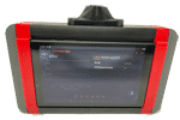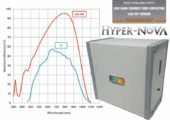Stray light is any light that hits the detector unintentionally. The detector is not able to distinguish wavelengths, so it cannot tell the difference between the e.g. 500 nm light that is supposed to hit a pixel and the 505 nm light that accidentally hit it. It will output the total intensity from 500 nm and 505 nm. Some sources of stray light are light scattered off the spectrometer surfaces, defects in the grating that cause improper diffraction, and light from higher diffraction orders. Stray light is usually given as a percentage of the intensity at a certain wavelength. For example, the stray light for the BLUE-Wave is <0.1% at 435nm and <0.05% at 600nm. StellarNet BLACK-Comet spectrometers are designed with a research grade Concave Holographic grating. This optical configuration produces the lowest stray light in any compact spectrometer on the market with only 0.02% at 435nm; 0.2% at 200nm. Read Performance Advantages of Concave Grating Optics in Compact Fiber Optic Spectrometers
Introducing our new Applied Spectroscopy Division
New Handheld Raman!
New! ChemWiz-ADK Handheld NIR Spectrophotometer with on board chemometrics and spectral matching!
Read More
Check out our SpectroChemistry Systems for UV-VIS and Fluorescence Applications
Learn More
New Spectrometer Python Application Driver
for Windows, Linux, RasPi, Mac
Check it out!
HYPER-Nova Highest Performance Raman Spectrometer
Learn More





